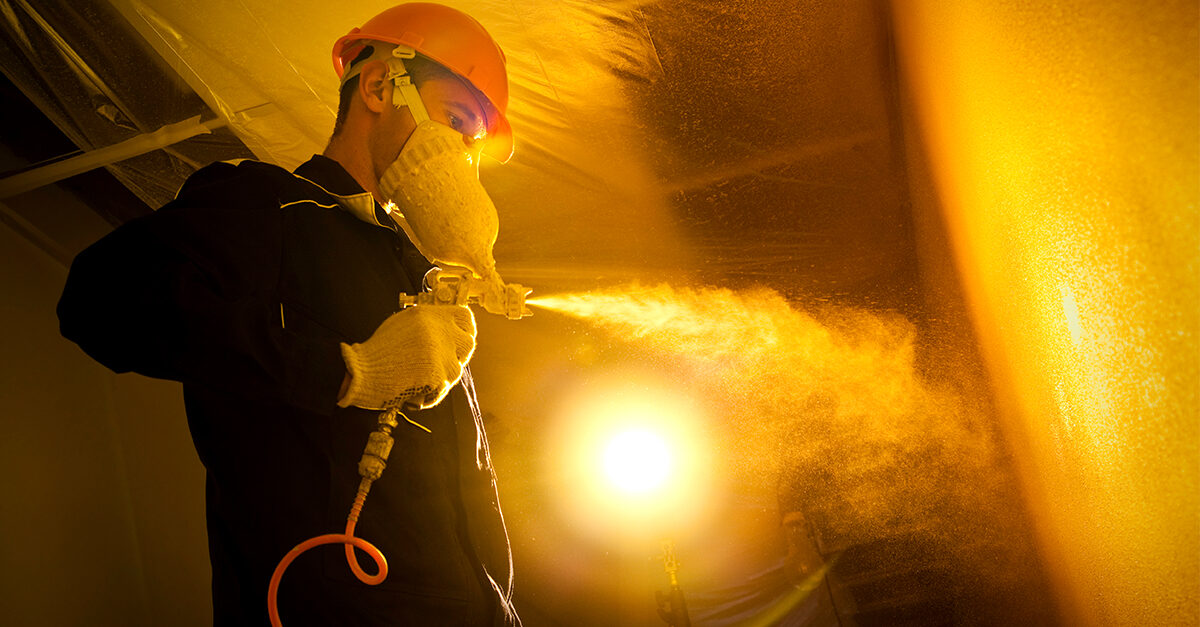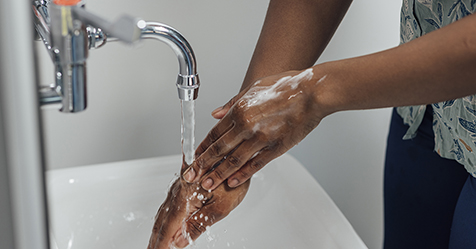Passive fire protection is an important part of building safety. While active fire protection like sprinklers and fire extinguishers help control a fire once it has begun, passive fire protection can quell a fire before it ignites.
Passive fire protection can include anything from installing fire-resistant walls and building design to applying intumescent and cementitious coatings to existing infrastructure. For the purposes of this article, we’ll focus on the fireproof coatings that help protect your facility.
The different types of fireproof coatings
There are two popular types of fireproofing available on the market today: intumescent paint and cementitious coatings.
Intumescent paints are a (relatively) new technology that emerged in the 20th century. These paints have binders that melt when temperatures rise. A chemical reaction occurs, and the intumescent paint expands to 25 to 50 times thicker than the original coat, creating a char that deters flame from combusting and spreading.
Lightweight cementitious coatings on the other hand are a relatively dated technology—a mixture of cement and paint used to coat heavy steel and concrete. These lightweight fire resistant coatings require more coats than intumescents and can leave tiny spaces between the coating and substrate that accumulate moisture and crack. Cementitious coatings are a cheaper alternative to intumescents, but generally less effective.
The cost of fireproofing your facility
Fireproofing costs vary from US$4 to $12 per square foot depending on your supplier and the type of paint you buy.
The following features can influence the price of your paint:
- Coating thickness: Thicker coats are generally more expensive
- Adhesion and surface preparation: If a coating adheres better with less surface preparation (e.g. sandblasting), it will be more expensive
- High solids and low VOC: If a coating is more environmentally friendly and has more binder than solvent (higher solids), it will be more expensive.
With intumescent paint in particular, the expansion ratio—i.e., how much the char expands and projects after heating up—can influence the price as well.
Fireproofing coatings are typically topcoats, meaning you’ll also need to consider the cost of a primer to prevent corrosion. Zinc-rich primers are a good option and provide long-lasting protection, but you’ll need to consider the class rating and ASTM standards before purchasing.
The most common ASTM standards and tests for fireproofing
The two best-known ASTM standards and tests for fireproofing include ASTM E-84 and ASTM E-119. There’s also ASTM E-2924, a relatively new standard developed in 2014 that deals specifically with intumescent coatings.
These are the three standards facility managers and maintenance crews should consider when buying a fireproof paint.
The ASTM E-84 test assesses coatings based on two indices: the Flame Spread Index (FSI) and Smoke Developed Index (SDI). Coatings are graded on a scale from A to C based on how fast flame spreads and how much smoke is produced during the test—two indicators of how effective the coating will combat continuous combustion.
In order to be Class A, coatings must have 0 to 25 flame spread during the test. One of the reasons intumescent paints have become popular in the last century is because they typically are classified as A class and meet modern fireproofing standards.
Note that ASTM E-84 is similar to UL 723 standards, and you might encounter either of these standards depending on your local rules and regulations. A similar standard, NFPA 255, was absorbed into ASTM E-84 and UL 723, and it was officially deprecated in fall of 2009.
ASTM E-119 is another standard you’ll likely encounter as a facility manager or maintenance crew manager. This code deals specifically with the heat resistance of your building material. A highly rated coating will endure up to eight hours of 2300-degree Fahrenheit temperatures, while a low-rated material can only withstand 1000 degrees Fahrenheit for five minutes.
Note that UL 263 is a similar code to ASTM E-119 facility managers might encounter that covers heat resistance standards.
Lastly, let’s take a look at ASTM E-2924. This code deals specifically with “specifying, manufacturing, testing, labeling, transportation, delivery and storage, installation, and inspection.” While the other standards deal with the quality of the coating, this one deals specifically with surface preparation and installation. It’s important to consider this standard to ensure compliance and prevent steel load failure.
Of course, fire standards vary by region and state, and you should understand the codes that affect your region before buying an intumescent paint.
Final considerations
There’s more to fireproofing than meeting the minimum standard and buying the cheapest paint.
You’ll want to consider the following properties and ask yourself a few questions before making a purchase:
- Long-lasting ignition protection: How much does reapplying and maintaining the coating cost, and can you minimize maintenance by purchasing a coating that lasts longer?
- Flame and smoke spread: How effective do you need the coating to be in different areas of the facility?
- Durability: Are you painting the substrate in a high-traffic area?
- Aesthetics: Are you painting the material in an area that will be viewed by patrons of the building?
- Ease of application: How much surface preparation does the coating require, and will it adhere easily?
- Low VOC: Should you consider 100% solids epoxy and other low VOC options for EPA compliance?
- Substrate: What type of substrate (wood, steel, concrete, etc.) are you applying the coating to, and what type of primer do you need?
Fireproofing a building is a high stakes endeavor with various rules, regulations, and jargon to learn. When in doubt, call a coating professional and get a second opinion. Getting the right coating can save lives—and your company’s bank account.




